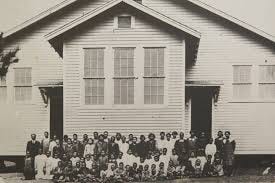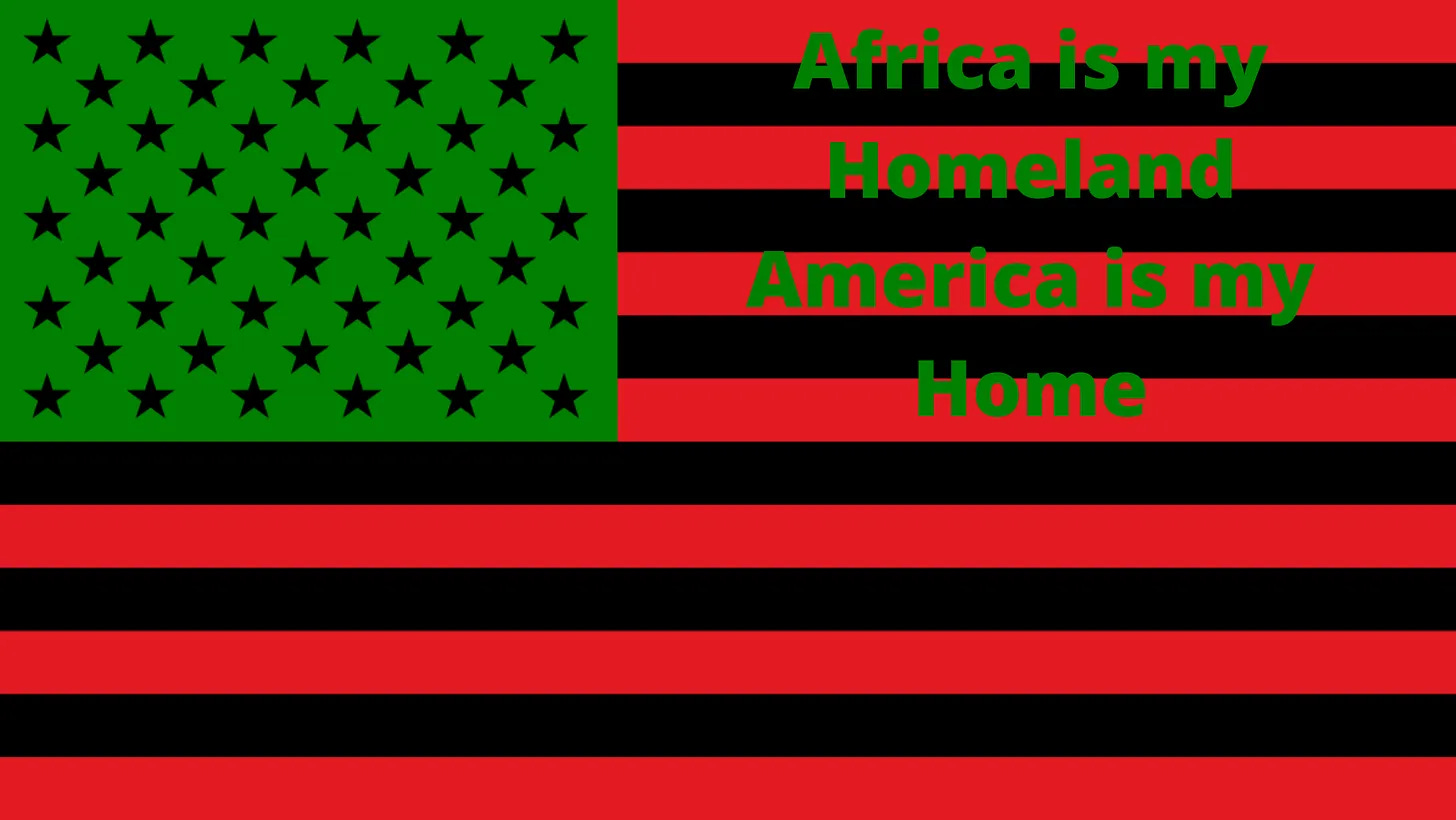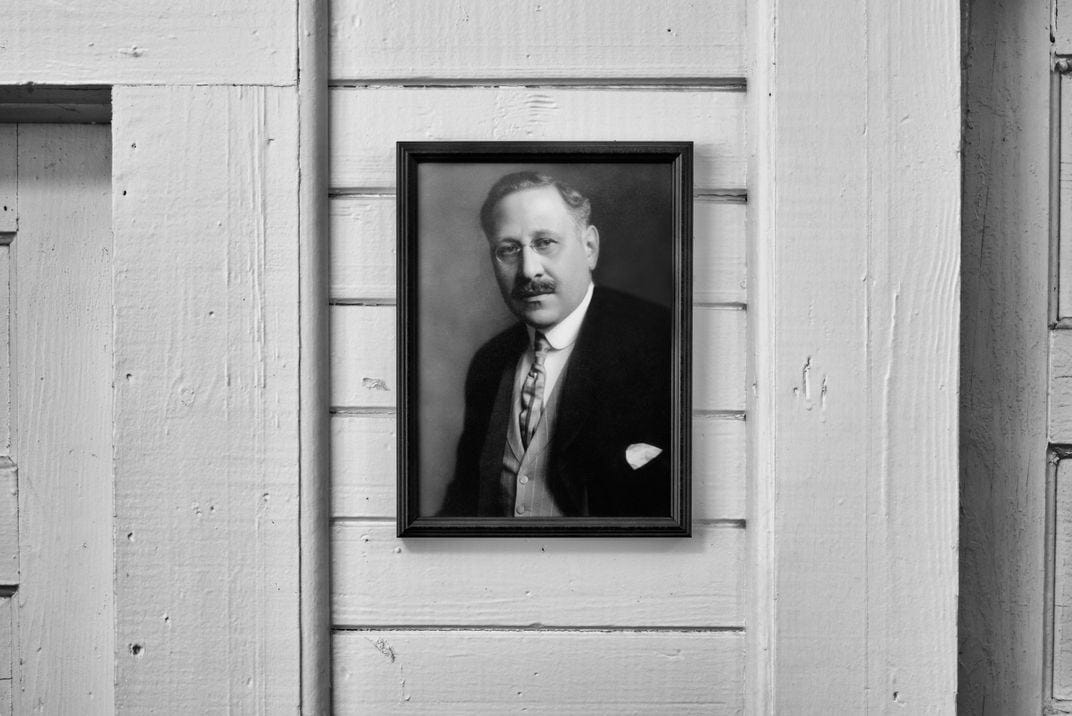Today In Black History
The Rosenwald Schools for educating Black students in the Jim Crow South
Issue #562 Today In Black History, Wednesday, April 10, 2024
Today’s Black History WOW!
In the early twentieth century, Julius Rosenwald, who was the president of Sears, Roebuck, and Co. partnered with educator and activist Booker T. Washington, the founder of the Tuskegee Institute, to establish a program to improve the quality of education for African American children in the Southern States.
Julius Rosenwald was born in 1862 in Springfield, Illinois, to a Jewish immigrant couple from Germany. Julius Rosenwald had a simple philosophy when it came to philanthropy. He explained, “What I want to do is try and cure the things that seem wrong.”
Julius Rosenwald
In the Jim Crow South, institutionalized segregation pushed rural Black students into poorly equipped and segregated public schools. Municipal education expenditures were a small fraction of monies spent on educating similarly situated white children. In North Carolina alone, the state only spent $2.30 per Black student in 1915 compared to nearly $7.40 per white student and nearly $30 per white student nationally.
By 1928, one-third of the South’s rural Black school children and teachers were served by Rosenwald Schools. These schools provided a safe and nurturing environment for African American students, who were often forced to attend overcrowded and dilapidated facilities due to segregation laws.
The first Rosenwald School opened in 1913 in rural Alabama, and over the next few decades, more than 5,000 schools were built across 15 southern states. The Rosenwald Schools, as they are known, were often the first schools in a Black community and helped improve education across the South and served more than 700,00 Black children over four decades.
One of the key features of the Rosenwald Schools was their unique funding model. The program required local communities to contribute to the construction of the schools, with Rosenwald and the Rosenwald Fund providing matching funds. This approach not only helped to stretch limited resources but also fostered a sense of ownership and pride within the communities.
All Rosenwald Schools followed detailed school plans that dictated everything from the schools’ physical orientation—north- or south-facing to allow for all-day sunshine through large windows—to the color of the walls—cream or eggshell—to encourage calm and learning. The schools rarely had electricity or indoor plumbing.
The guidelines were devised under the stewardship of architect Robert Robinson Taylor, who before becoming a professor at Tuskegee was the first Black student enrolled at Massachusetts Institute of Technology and the nation’s first accredited Black architect. Taylor’s great-granddaughter is Valerie Jarrett, a former senior advisor to President Barack Obama.
Many prominent figures in African American history, such as poet Dr. Maya Angelou, civil rights activist Julian Bond, Medgar Evers, members of the Little Rock Nine, and Congressman John Lewis, attended Rosenwald Schools.
After the 1954 Supreme Court decision in Brown v Board of Education, the Rosenwald Schools closed as regular public schools slowly integrated. There are current initiatives to save and restore Rosenwald school buildings to serve as reminders of how Black Americans were educated in the Jim Crow South through community initiatives and philanthropy.
Today In Black History
- In 1864, Confederate General Robert E. Lee issued his last order, General Order #9.
- In 1941, Dr. George Washington Carver developed a drug made from persimmon to treat the gum disease pyorrhea.
- In 1947, Jackie Robinson signed the contract that made him the first Black professional player in Major League Baseball.
- In 1968, the U.S. Congress passed the Civil Rights Bill that banned racial discrimination in the rental or sale of housing in the country.
- In 1975, Lee Elder became the first Black person to play golf in the Master’s Championship.
- The “Comments” feature has been disabled. Instead, let’s discuss these facts in our community on Substack Notes. You can also read other Substack publications without subscribing to them when you join Notes.
This post is free to read/listen to for three days after publication. To have 365 24/7 access to all our posts and podcast episodes and financially support “We Are Speaking” for no more than $5 per month, please subscribe at the paid level. You will receive a 7-day FREE trial!








